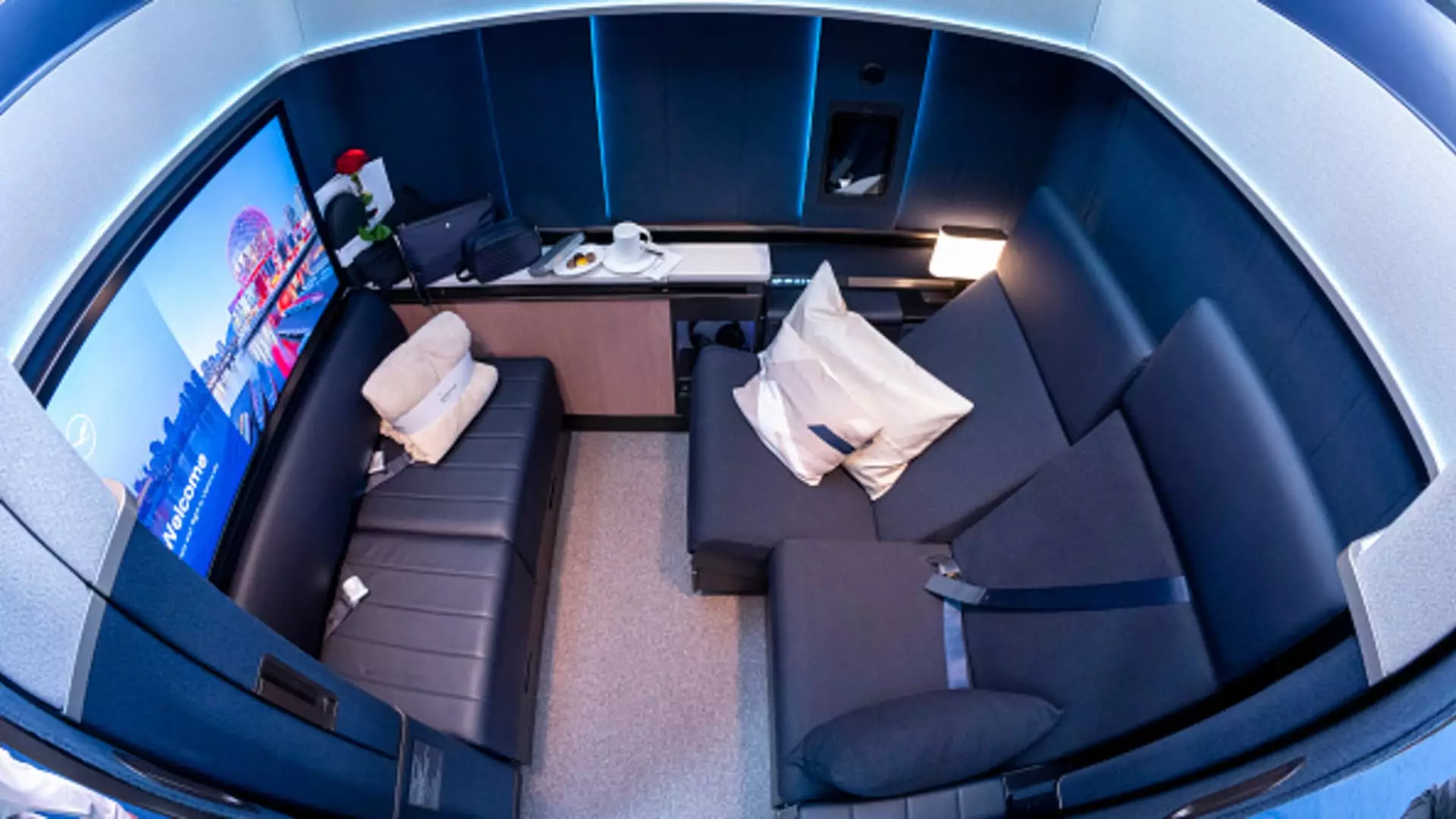In recent years, airlines have embarked on a transformative journey to enhance the passenger experience by introducing luxurious features in their aircraft cabins. Innovations such as heated or cooled seats, ultra-high-definition screens, spacious benches, convertible beds, and even privacy doors are captivating high-paying travelers seeking comfort during long flights. However, as airlines race to equip their fleets with these extravagant additions, they face unexpected bottlenecks and production delays that have emerged as a critical challenge for both airlines and aircraft manufacturers, such as Boeing and Airbus.
The surge in demand for upgraded seating and cabin configurations has led manufacturers to grapple with the implications of these design changes. Aircraft producers are now confronted with the complex task of aligning new components and cabin modifications with stringent regulatory approvals. This oftentimes lengthy certification process has resulted in delays affecting their delivery timelines, as highlighted by the CEOs of both leading companies during a recent industry conference.
The assembly of aircraft is an intricate operation involving numerous components, where even minor changes can cascade into significant delays. Kelly Ortberg, CEO of Boeing, noted during a Barclays industry event that the assembly of new 787 Dreamliners is being hindered by the availability of advanced seating. The problem lies not solely in the seats themselves but extends to the intricate design elements that accompany them—such as storage compartments and privacy dividers, which require meticulous certification.
Simultaneously, Airbus faces similar challenges, as observed by CEO Guillaume Faury. He described how the sophistication of modern aircraft cabins is leading to prolonged lead times not just for seat production but also for essential elements like galleys and closets—components that play a crucial role in overall passenger comfort. The regulatory environment mandates that airlines ensure safety and efficiency, and this continues to stifle the production pipeline amid heightened demand.
The implications of these delays extend beyond regulatory challenges; they significantly impact economic performance for manufacturers. The bulk of an aircraft’s payment comes upon delivery, making timely aircraft deliveries fundamental to revenue flow. This exigent situation is exacerbated by the wider context of post-pandemic recovery, in which labor shortages and stressed supply chains have already strained operational capabilities around the globe.
As observed in recent weeks, the aviation industry is not immune from broader governmental austerity measures. The dismissal of hundreds of Federal Aviation Administration (FAA) employees, while framed as a cost-cutting tactic, raises concerns regarding the future pace of certifications and regulatory approvals, potentially elongating delays even further.
Amidst the impending delays, the profitable allure of premium cabin seats cannot be overlooked. Airlines stand to gain substantial revenues from their premium offerings. For example, while Delta Air Lines advertises standard economy travel for prospective passengers on routes like New York to Paris at prices starting around $816, a seat in their Delta One first-class category can soar to $5,508.
This potential windfall has motivated airlines globally to deeply invest in cabin enhancements, including businesses like Qantas and JetBlue, highlighting a sharp pivot towards premium seating. Both Delta and American Airlines illustrate how airlines are struggling to keep pace with burgeoning passenger preferences influenced by consumers’ willingness to invest in higher-priced travel options, particularly in the wake of the COVID-19 pandemic.
As the situation unfolds, experts within the industry emphasize the painstaking attention to weight considerations and structural design that accompany the development of these advanced seating options. A modern business-class seat typically comprises approximately 1,500 components, and any oversights concerning weight distribution can inadvertently affect aircraft performance. This factor compels manufacturers like Recaro to fine-tune design elements to ensure optimal weight management while also catering to aesthetic preferences among travelers.
Organizations like Swiss International Airlines signal a commitment to modernize their cabin interiors, emphasizing the dual challenges of managing weight distribution and accommodating customer demands for contemporary aesthetics.
As airlines pursue advancements in aircraft comfort and efficiency, the struggle against regulatory complexities coupled with logistical challenges suggests that the pathway to achieving luxurious cabin experiences is fraught with delays. Companies like American Airlines are beginning to see the light—by recently acquiring regulatory approvals for their new seating configurations, they show a glimmer of hope for the industry amidst delays.
The road to revolutionizing the air travel experience will undoubtedly require patience, persistence, and ongoing collaboration among airlines, manufacturers, and regulators as they navigate an evolving landscape of customer expectations and compliance requirements. The luxury and comfort that passengers seek is within reach, but the journey to get there remains intricate and challenging.

